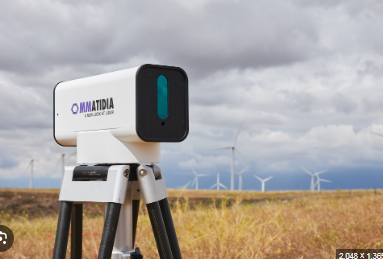
Understanding Surveying Equipment: A Key Element in Modern Land Measurement
Surveying is a fundamental process that plays a crucial role in mapping and land measurement, influencing everything from construction projects to environmental conservation. Accurate surveying ensures that land is developed and utilized efficiently, and this is made possible by the use of advanced surveying equipment. This equipment helps professionals in obtaining precise measurements, determining boundaries, and evaluating topography. In this article, we will explore various types of surveying equipment, their uses, and their importance in the field.
The Role of Surveying Equipment
surveying equipment is essential for professionals to measure distances, angles, and elevations, which are all key elements in the creation of accurate maps. Whether it’s for laying down the foundation of a building, planning a new road, or delineating property boundaries, surveying equipment ensures that measurements are correct, reducing errors and ensuring compliance with legal and regulatory standards.
Common Types of Surveying Equipment
1. Theodolite: One of the oldest yet still widely used instruments in surveying, the theodolite helps measure horizontal and vertical angles with a high degree of accuracy. Modern versions come with digital displays for easy readings and advanced features for better precision.
2. Total Station: This versatile tool integrates an electronic theodolite and an electronic distance measuring device (EDM). Total stations are capable of measuring angles and distances, and they can be connected to a computer for data processing. They are indispensable in modern surveying due to their speed and accuracy, making them suitable for various projects, including construction, land development, and road planning.
3. GPS/GNSS Equipment: Global Positioning System (GPS) and Global Navigation Satellite System (GNSS) equipment are now essential for large-scale and high-accuracy land surveying. These systems use satellites to determine precise locations and elevations, providing real-time data. Surveyors utilize these tools for geospatial data collection and mapping in vast, difficult-to-reach areas where traditional methods may be impractical.
4. Leveling Instruments: These tools are primarily used for measuring height differences and ensuring that surfaces are level. The most common type is the automatic level, which provides accurate measurements for construction projects, drainage systems, and any work requiring precise leveling.
5. Laser Scanners: Laser scanning technology is increasingly used in modern surveying due to its ability to capture highly detailed 3D data from large areas in a short period. Laser scanners are particularly useful for creating digital models of landscapes, buildings, and structures, making them an invaluable tool in industries like architecture and urban planning.
6. Measuring Tapes and Chains: Though less advanced than other equipment, measuring tapes and chains remain essential tools for land surveyors. They are particularly useful for measuring shorter distances or when detailed high-tech equipment is not required.
The Importance of Accurate Surveying
Accurate land surveying is crucial for several reasons. It ensures that construction projects are built to specifications, preventing costly mistakes and delays. Properly surveyed land minimizes disputes related to property boundaries and land ownership. Additionally, surveying is vital for environmental planning, as it helps in assessing land use, managing resources, and avoiding hazards like floods.
Conclusion
Surveying equipment is the backbone of modern surveying, providing professionals with the necessary tools to conduct accurate measurements. With the continuous advancement of technology, these tools have become more precise and efficient, enabling surveyors to complete projects faster and with fewer errors. Whether it’s measuring distances, angles, or elevations, surveying equipment ensures that all measurements are correct, aiding in the successful planning and execution of projects across various industries. The role of surveying equipment in today’s world cannot be overstated, as it supports the careful and efficient development of our infrastructure and land resources.